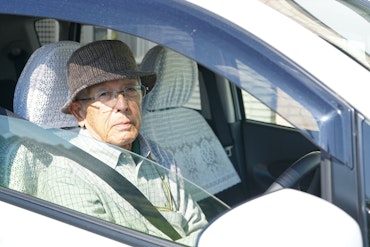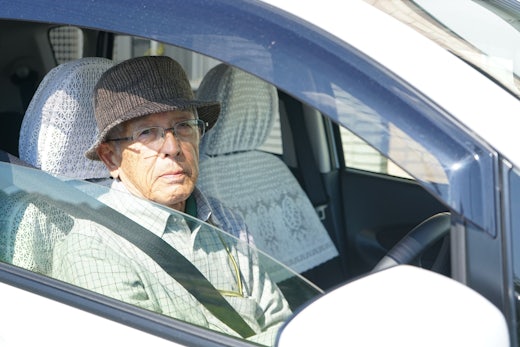National Cabinet approves reduced visitor restrictions plan for aged care homes
Residents in aged care facilities will be able to get together with their loved ones again after National Cabinet agreed on a plan to remove visitation barriers across the sector, which will reduce social isolation issues in nursing home settings.
![<p>Government are asking States and Territories to allow more visitors into aged care as the COVID-19 vaccine numbers increase. [Source: Shutterstock]</p>](https://agedcareguide-assets.imgix.net/news/articles/news/articles/5_8_2021-Limited-visitors-allowed-AC.jpg?fm=pjpg&format=auto&w=550&q=65)
Government are asking States and Territories to allow more visitors into aged care as the COVID-19 vaccine numbers increase. [Source: Shutterstock]
The Australian Health Protection Principal Committee (AHPPC) has outlined principles that would allow for the removal of visitation restrictions in aged care facilities.
Minister for Health and Aged Care, Greg Hunt, and Minister for Seniors Australians and Aged Care Services, Richard Colbeck, have welcomed the AHPPC principles saying it will provide an opportunity to reduce social isolation impacts on aged care residents.
The plan from the National Cabinet follows the recent announcement from the New South Wales (NSW) Government last week who are easing visitor restrictions in aged care for double vaccinated members of the public.
“Aged care providers have a responsibility to support the wellbeing of their residents and we know this can be improved through face-to-face visitors, whether it be family, friends, advocates or people providing cultural or community support,” says Minister Hunt.
“Older people in residential care should be able to take advantage of reduced restrictions and participate in activities outside facilities such as outdoor exercise and visits with friends and family.
“We encourage States and Territories to implement these principles through their public health orders, following a similar easing of visitor restrictions in New South Wales.”
The AHPPC strongly encourages all visitors in other States and Territories to get both COVID-19 jabs before they consider visiting a loved one in aged care.
National Cabinet and the AHPPC are still considering whether they will make it mandatory for visitors to be vaccinated against COVID-19 to be able to enter an aged care home.
While the AHPPC is aware that reducing visitor restrictions could increase the risk of COVID-19 in aged care facilities, it says visitation limits need to be proportionate and take into account the social health and wellbeing impacts on residents.
If there is an outbreak in an aged care facility or COVID-19 concerns on a local level, the AHPPC is recommending limiting restrictions to the facility as per best practice outbreak management.
Minister Colbeck says a majority of providers are already showing leadership in regards to their infectious control plan and should be looking at implementing a reduction to visitor restrictions.
“Providers and residential aged care administrators should carefully follow this advice and ensure that access by visitors is undertaken using appropriate COVID-safe precautions such as location check-in, social distancing, and the appropriate use of personal protective equipment,” says Minister Colbeck.
AHPPC is also recommending that providers consider offering infection prevention and control advice and training to regular visitors at their homes so they can be aware of the different COVID-19 precautions used in residential aged care facilities.
The visitation guidelines are currently being updated, as well as the Industry Code for Visiting Residential Aged Care Homes during COVID-19 and the National Aged Care Visitation Guidelines. Jurisdiction specific plans will also consider aged care visitation as part of a broader strategy for when community vaccination targets are achieved.
Minister Colbeck says increasing the COVID-19 vaccination rates in the community is important as it means older people are less at risk of developing the disease that can lead to serious illness or death.
“Importantly, as at 1 October, 86.5 percent of residents and 83.8 percent of residential aged care workers are fully vaccinated,” says Minister Colbeck.
“Where restrictions have been reduced, I urge residential aged care providers to take every step to support visitors such as screening visitors at entry, encouraging the use of masks, and monitoring the use of common areas to support social distancing.”
Industry peak body, Leading Age Services Australia (LASA), says it’s looking forward to reduced visitor restrictions in aged care, however, this does mean that there is a clear acceptance of a degree of community transmission of COVID-19 going forward with increased vaccination rates.
Chief Executive Officer (CEO) of LASA, Sean Rooney, adds that these moves to allow limited visitations should not compromise on an aged care provider’s ability to safeguard the health and wellbeing of their residents and staff.
“[Limited visits] will come as a great relief to families and aged care residents who have endured months of physical separation and isolation,” says Mr Rooney.
“LASA is seeking more detail on how the current restrictions will be lifted and urges all Governments to include the aged care sector in meaningful consultations to ensure measures are in place to protect the safety of residents which are consistent with broader community reopening.
“With many State and Territory jurisdictions releasing roadmaps to fewer restrictions it is clear that this comes with an acceptance of a degree of community transmission of COVID-19 along with increasing rates of vaccination.”
Aged and Community Services Australia (ACSA) has also welcomed the visitation changes, but want more clarity around how visits will work if there is high community transmission.
ACSA CEO, Paul Sadler, says, “ACSA is committed to doing our bit to provide everyone greater clarity. We are working with our consumer and provider peak colleagues to update the Industry Visitation Code in light of the rising rate of vaccinations in the community.
“The new residential care visiting guidelines are a step in the right direction but we need better clarity and direction to keep people safe and avoid confusion.
“At a minimum, we need further rules around visitation when community transmission is high, and support for the use of rapid testing.
“We need the Government to take responsibility with total clarity and direction so that older Australians, visitors and providers are protected both physically and emotionally as we start to open up and ease restrictions. And providers need certainty about how the costs of long-term protection mechanisms are to be managed.”























Comments